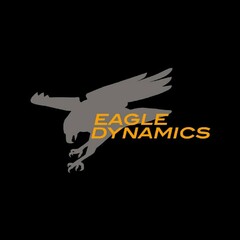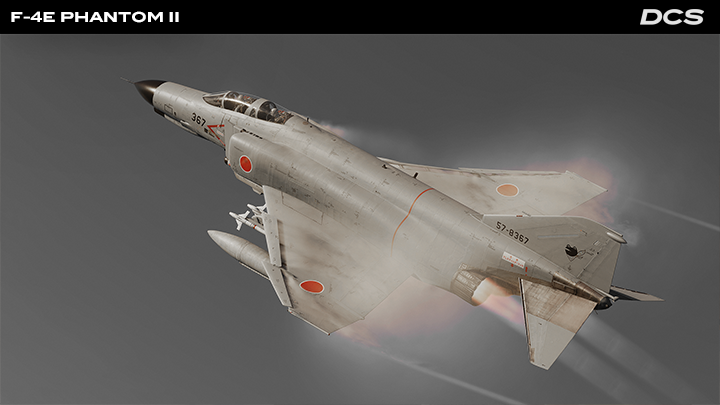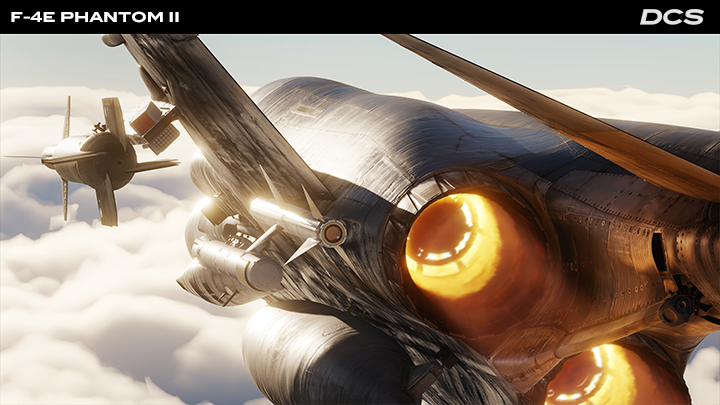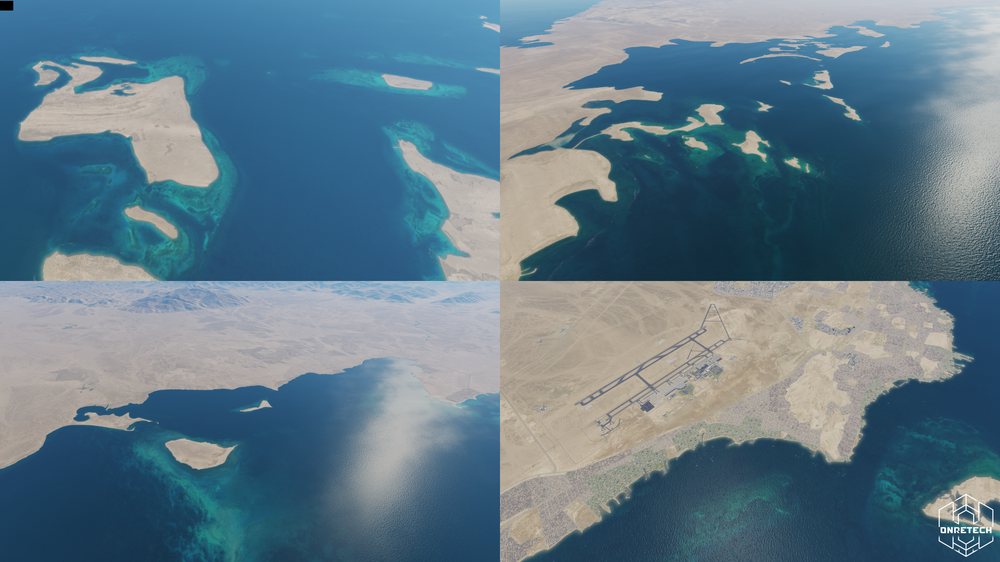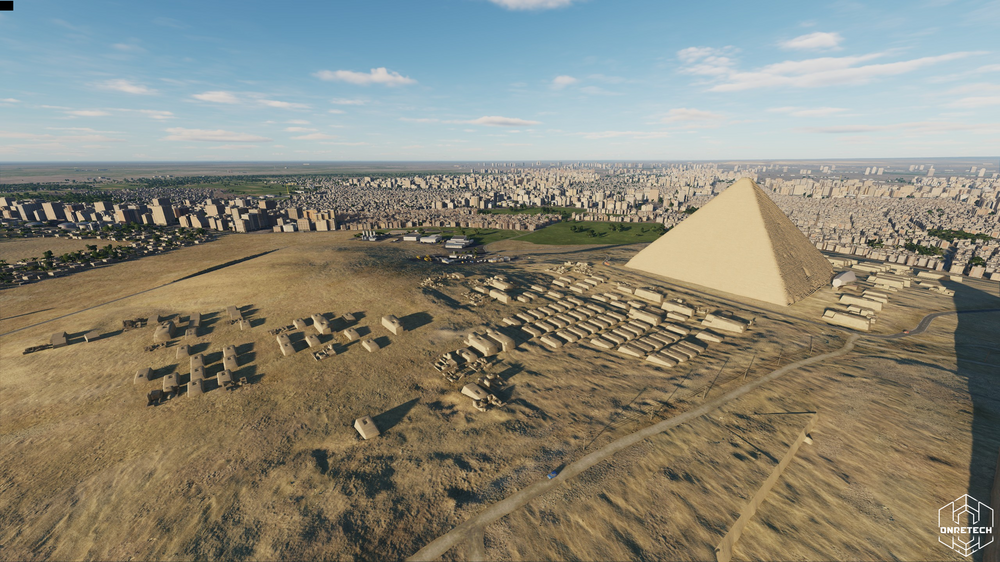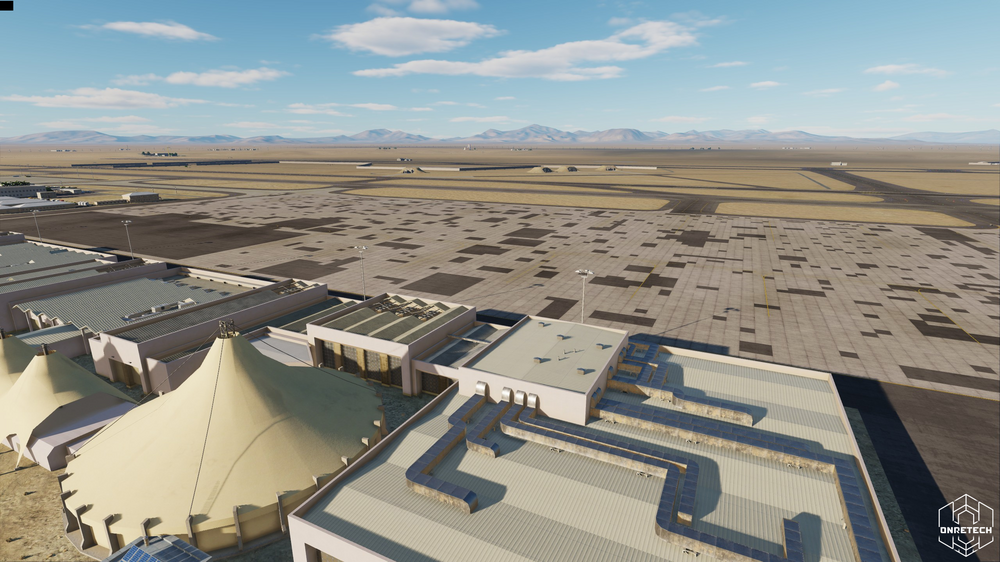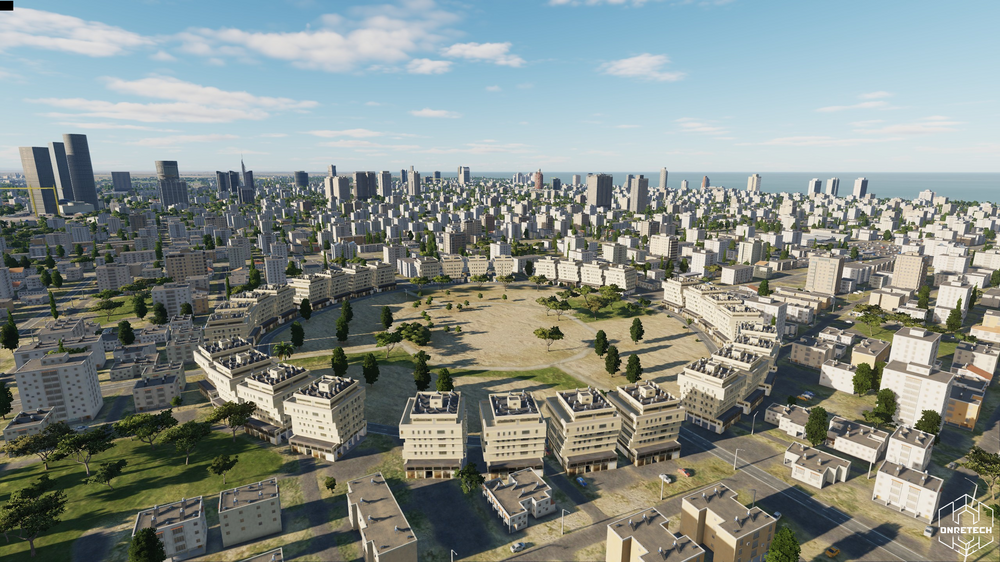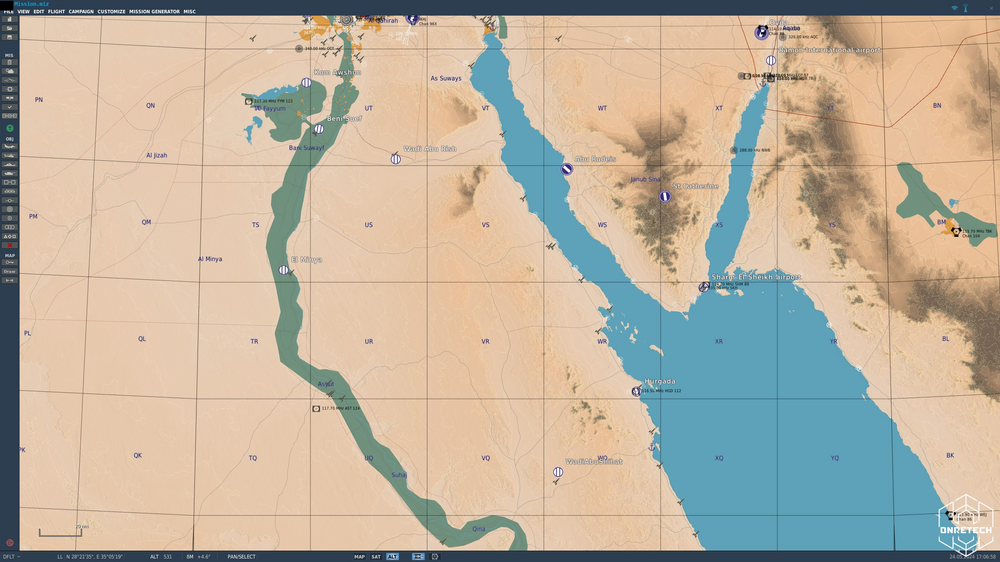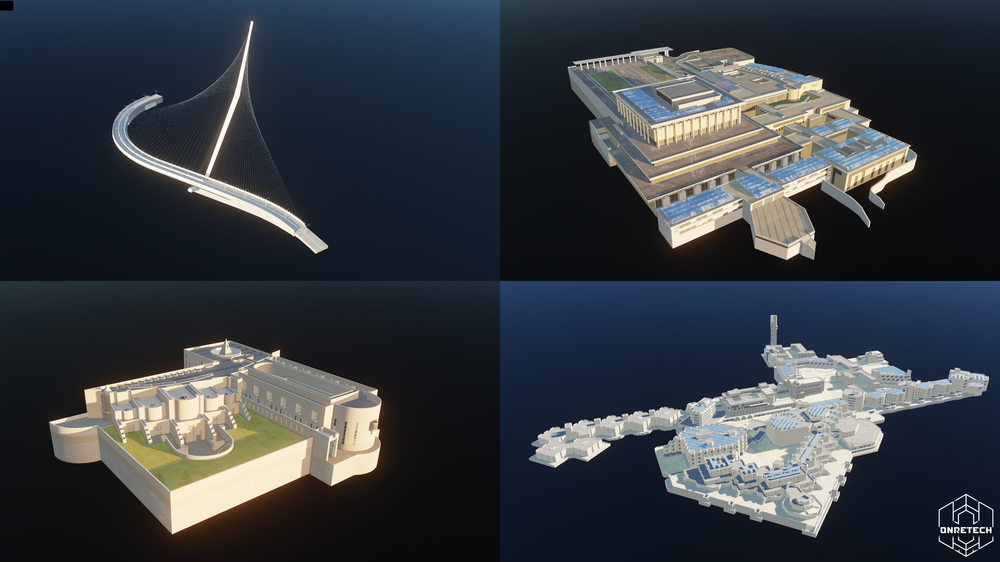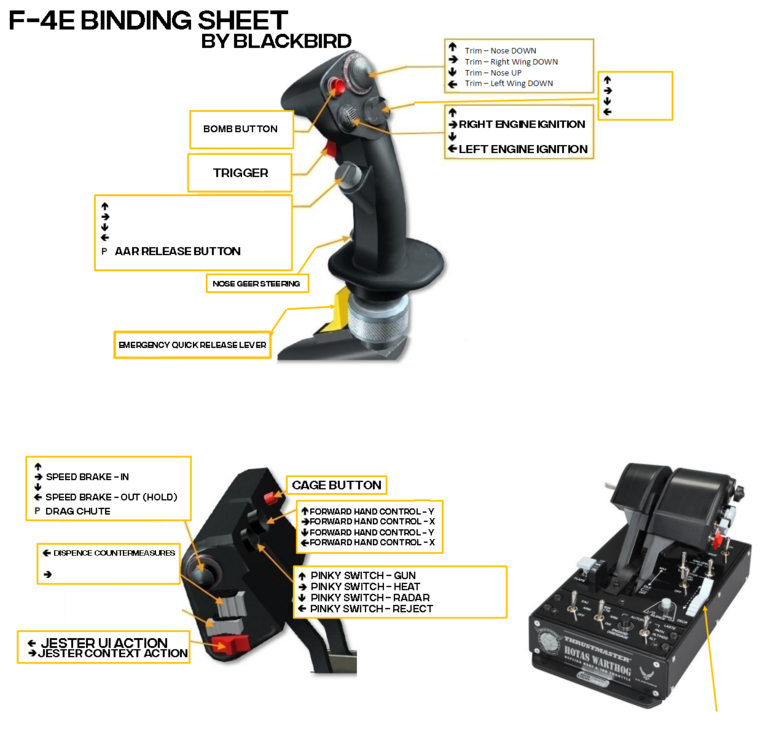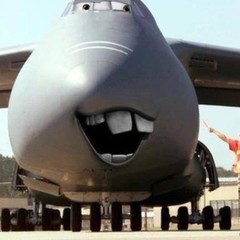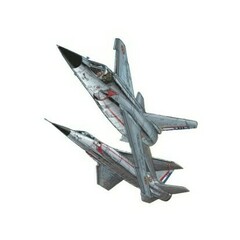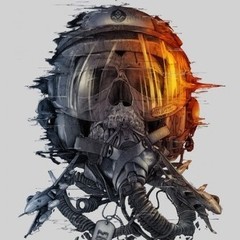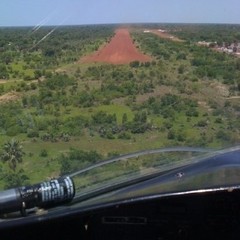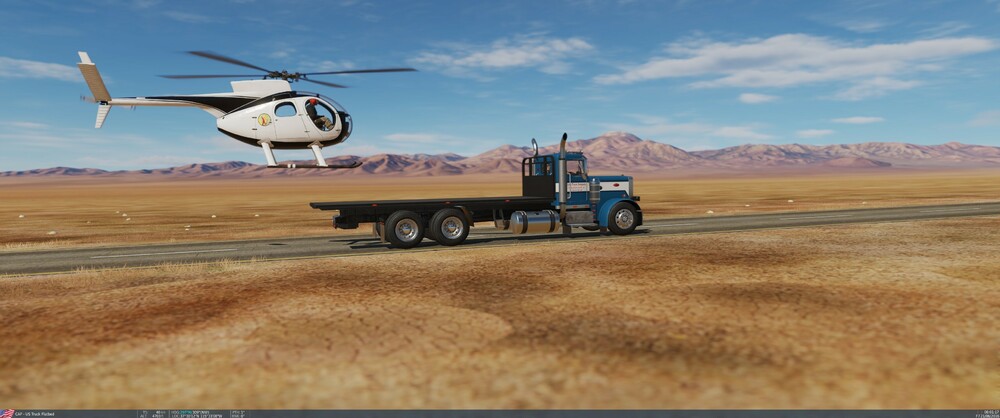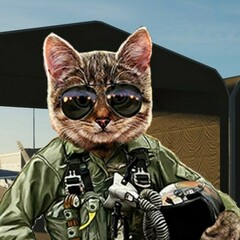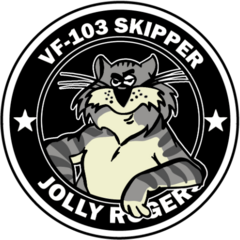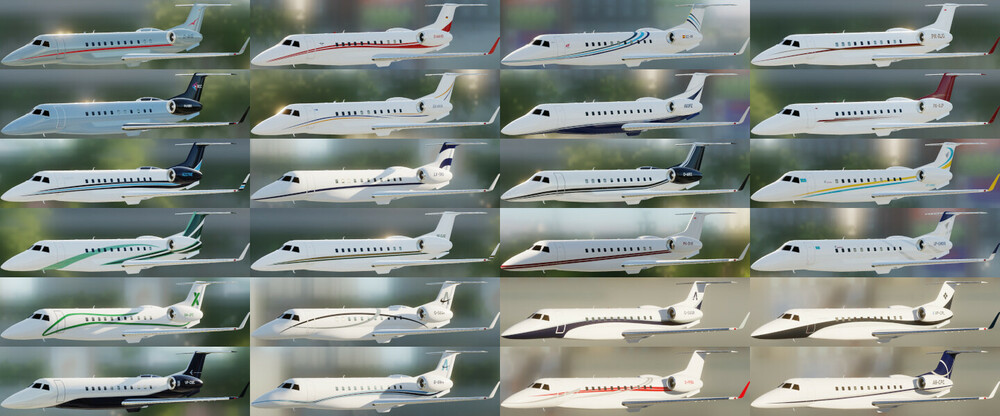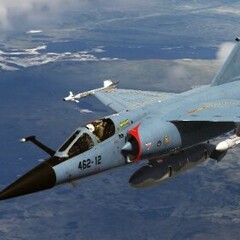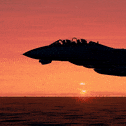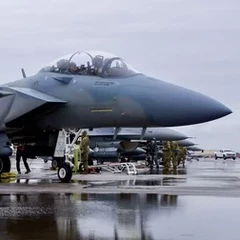Leaderboard
Popular Content
Showing content with the highest reputation on 05/25/24 in all areas
-
So you would like to shoot the AGM-45 Shrike off of your shiny new Phantom and LARP that you are an F-4G or a Wild Weasel of yore. The first thing thats probably on your mind after playing around with it is probably “this missile is broken” and “how the hell does it work even”. Hopefully this guide can help clear up some of the confusion about the original Wild Weasel anti-radiation weapon and help you figure out how to use it in DCS. How the AGM-45 guides Everybody is probably wondering about the new seekerheads you can select with the arming and rearming menu, but first lets start with the basics. How does the AGM-45 actually fly to its target. “Its just an ARM” you say, “if it sees the emission of its target it should guide on it.” Yes and no. There are several things that have to occur for the shrike to guide. Lets start with an overview of the Shrike itself. The seeker The seeker is a passive Radio Frequency seeker that has a 45 degree field of view in DCS and a 150 second operating time, the seeker is on once the shrike is armed and will give you a high pitched tone, similar to a sidewinder, that indicates when it is tracking something inside its field of view. This tone may stutter or change as the emitter that the seeker is tracking rotates or changes modes. Once launched the seeker is always tracking or attempting to track something that it can see within its field of view. Guidance control The guidance control section is the “autopilot” that gives the commands from the seeker to the fins to steer the missile. This section is not enabled until after launch and certain conditions are met. You can choose the conditions that will enable the guidance control by selecting LOFT ATTACK or DIRECT ATTACK on the rearm fuze selection menu, or in the mission editor. You cannot change these via switchology in the jet (there is an exception but it is not implemented yet. If this changes I will update this to represent this) LOFT ATTACK: This is the most complex set of conditions to enable the guidance control section. The conditions are: Missiles barometric altimeter detects a pressure increase of 1 PSI (~1-3000 feet depending on altitude and temperature) Missiles barometric altimeter sense that the missile is below 18,000ft MSL ONCE BOTH OF THESE CONDITIONS ARE MET THE GUIDANCE CONTROL SECTION WILL UNLOCK and the signals from the seeker will be sent to the control section and the fins. Until these conditions are met the missile will be flying completely ballistic and unguided, even though the seeker may see and be tracking the emitter the entire time. DIRECT ATTACK: With this selected the altitude sensor for the loft attack is bypassed and the guidance control unlocks approximately 3 seconds after launch. This is your “shoot it straight down the throat” guidance control selection. The AGM-45 will naturally roll at approximately 55-60 degrees per second, and the guidance control system does not attempt to stop this once it enables. Additionally the fins only actuate with BANG-BANG control inputs, which you can watch if you observe the missile via F6 after launch. All of this is to say that once the guidance enables the AGM-45 will be corkscrewing and its fins will be BANG-BANGing constantly, which results in a very high potential energy loss once guidance begins. What all this means for employment and range DIRECT ATTACK guidance missiles will have VERY short range, and the depression angle is very important, the more the missile has to glide to the target, the more likely it will just run out of energy and fall extremely short. Recommend trying to fire by getting 20 degrees or more nose down pointed straight at the target, or being right on top of it if firing at low altitude. Both of these will result in very short ranges. LOFT ATTACK guidance however can get quite good range if lofted accurately. The fins remaining locked and the missile flying ballistic until guidance enable allow it to retain much of its energy and usually results in a fairly steep (30-45 degree) descent angle when it enables guidance. However remember that the seeker only has a 45 degree field of view, and the target must be inside that field of view when the guidance section activates (below 18,000 feet and missiles altimeter detects a 1 PSI pressure increase). This means you have to actually get that missile quite accurately to a window above the target when the seeker activates where it can detect it and guide. You can employ a LOFT ATTACK shrike directly pointed at a target or level (not in a loft) as well, and it will get more range due to the fins staying locked for longer, however the missile will not start guiding till much later, so for short range immediate guidance scenarios it may not be the best. With all of that How do you shoot the Shrike in the F-4E Ok so you understand what the DIRECT and LOFT ATTACK modes do, and what the up and downsides of each mode are and what effect they have on the missiles guidance and energy. Now we get to how do you actually Use them in the F-4E. There are 3 modes you can use to employ Shrikes in the F-4E: LABS Loft WRCS Direct WRCS AGM-45 We will cover these three after going through the basic cockpit setup. Basic cockpit switch setup For all these modes you must: Select the station for the shrike(s) you wish to employ Select ARM on the weapon select knob Select one of the 3 modes on the LABS/WRCS knob (LOFT, DIRECT, or AGM-45) (optional) Turn the Flight Director on (if you want the needles on the ADI indicating shrike seeker look angle) (optional) select A/G on the Sight Turn Master ARM on LABS Loft Selecting LOFT on the LABS/WRCS knob will allow the LABS LOFT circuits to fire the shrike automatically. However this works Exactly Like it does for bombs, it simply applies the launch signal to the shrike launchers, instead of a release signal to bombs. So it is setup and used the exact same way. You will need to plan out an IP, a run in time to your loft point, and pick a loft angle, enter them in the LABS computer and timer in the backseat. Once these are entered, you then overfly the IP, hold the pickle button down, point at the target, and follow the ADI needles, as you rotate through the preset loft angle with the pickle button held down, after the expiration of the run in timer, the missile will depart the jet. This mode obviously requires preplanning, and the ability to know ballistically what angle you want to release the shrike at, and at what range to start the loft, and then use this to enter in the run in timer, select an IP and pick a loft angle. None of this is calculated for you, so only via trial and error and practice will you be able to figure out what settings will work for you. For more information about Loft you can also take a look at our manual: Lofting & Tossing WRCS DIRECT Selecting DIRECT on the LABS/WRCS knob makes the selected shrike launch approximately 1 second after you hit the pickle button. That's it. Center up the needles, or dont center up the needles, pickle and the shrike will go on its merry way. There is zero automation, so if you desire to fire the shrike in a loft, you will have to manually pull up based on your own practice and situational awareness. There is also no indication that you are in range or out of range. WRCS AGM-45 Selecting AGM-45 on the LABS/WRCS knob is the “preferred” way of employing the shrike, it will give you ranging indications for the shrike and let you know if you are in range to loft, perform a level release, or a diving release of the shrike. If you want to perform a loft or level release with this mode, you should be using a LOFT ATTACK shrike. The WRCS has no way of knowing which type of seeker guidance you have selected and will always be calculating assuming the LOFT ATTACK logic is occuring. Thus if you fire a DIRECT ATTACK missile following the loft or level release cues, it will probably start guiding immediately, and fall far far short of the target. WRCS AGM-45 makes use of the “target altitude” setting in the computer panel in the WSO cockpit to trigonometrically calculate a ground range to your INS depression angle as displayed on your ADI. Any time your nose is below the horizon it should be calculating the range to where the ADI depression intersects with the set target altitude, if you would like your reticle to match, you need to have it depressed by 35 mils. For the most accurate ranging you will want that target altitude set to a representative altitude of the theater or target area you are pointing at. One interesting use of this is even if you have no shrikes on the aircraft you can select this mode, and if you depress the reticle 35 mils, you can use this to get a range to locations on the ground by pointing at them with the reticle (assuming the target altitude setting is relatively accurate.) This range should be displayed on the range readout on the HSI any time the nose is below the horizon and the calculation is running. The max range this system can calculate out to is 30 miles. This is a limitation of the WRCS, it will not display a range greater than 30 miles. As soon as it calculates a ground range the WRCS will calculate if you are in range for a shrike and if you are in range for a loft, level, or diving release. Indication that you are in range will be one of your AOA indexer lights lighting up to indicate which of these deliveries are available to you. The indications you could get are: Out of range, no lights light up In range with a loft, upward pointing chevron illuminates In range for a level launch, donut illuminates In range for a diving direct launch, downward pointing chevron illuminates Remember these indications are based on your current nose depression angle, and will be calculated and displayed regardless of whether your shrike sees anything, or even if you have a shrike on the aircraft. Only one of these should turn on at any time until you pickle, once you pickle and hold the donut will eventually illuminate to inform you the launch is about to occur. Just to visualize this, if you start out of range to a threat, and fly towards it, with the nose pointed at the target (in a dive), first the loft cue (upward chevron) will illuminate as you get into range for a loft, then once you are close enough for a level launch, the upward chevron should go out and the donut should illuminate. Once you are too close for a level launch and approaching minimum range, the donut should go out, and the dive cue (downward chevron) should illuminate. If you get too close for that, then all the indexer lights should go out. To use the system, select a shrike and point towards a target, once you get a signal and the needles deflect, center up the needles, once you have the needles perfectly centered in your ADI, your ADI should be directly pointed at the targets location and assuming your target altitude in the rear cockpit is somewhat accurate, the calculated ground range and LAR should also be fairly accurate. You could also do this if you visually see a target SAM site or SAM launch, if you know the type and have the correct type of shrike seeker selected, with your reticle set to 35 mils (matching the ADI boresight) you can put the reticle on the target SAM to get your dip ranging as well. Once you have an in range indication (one of the AOA indexer lights has illuminated) with the ADI or depressed reticle centered on the target location. Pickle and hold as you maneuver for the release. Pickling will save the range calculated and start the release computation for the shrike. Remember to continue to hold the pickle button down as you fly the launch maneuver and until the missile leaves the jet, this can take several seconds. If you elect to do a loft with the upward chevron illuminated, pull up keeping the vertical needle centered while holding the pickle button, the donut will eventually illuminate to let you know that the missile will launch in 5 seconds assuming no parameters change. If you continue to pull up after the donut illuminates, it is possible for it to launch sooner than 5 seconds as the parameters are changing after the donut illuminates. If you elect to wait until the donut illuminates and perform a level release, simply hold the pickle button and pull to level, the donut should remain illuminated and within 5 seconds the missile should launch. If you wait until the dive cue is illuminated, keep the target centered in the ADI needles, pickle and hold, the donut should illuminate and the missile should launch within 5 seconds. The DF REJ switch on the center pedestal should remain in DF REJ (down), this uses the very accurate INS depression angle (requiring you to dip your nose to align the needles on the ADI) to calculate the range. NOT IMPLEMENTED CURRENTLY-DF REJ is always used regardless of switch position You can also move the switch to NORM (center position) This will then just use the raw shrike seeker depression angle in the same calculation, not requiring you to dip the aircraft's nose. However, the shrikes seeker depression angle is very inaccurate, and this will more than likely result in gross ranging errors which can result in your missile going too far or too short and never finding the target. NOT IMPLEMENTED CURRENTLY-DF REJ is always used regardless of switch position The recommendation from the real world manuals and how heatblur have modeled the shrike seeker indications in the cockpit is to leave the switch in DF REJ and perform the dip ranging maneuver before launch. Gotchas The LABS/WRCS knob has ZERO effect on whether the AGM-45 performs the LOFT ATTACK guidance enable logic or the DIRECT ATTACK guidance enable logic. This can be the source of much confusion. You could choose LOFT on the LABS/WRCS knob, and fire a DIRECT ATTACK shrike, it will then enable guidance 3 seconds after launch, and pull down out of its loft to track the target it sees. You could choose DIRECT on the LABS/WRCS knob and fire a LOFT ATTACK shrike, it will then follow the LOFT ATTACK guidance enable logic detailed above, enabling below 18,000 feet and after detecting enough of a descent. The other thing is there is very little actual automation or computation with either LABS LOFT, or WRCS DIRECT, you are essentially doing all of the planning or in range assessment yourself in these modes. Practice will be necessary and some trial and error to determine what altitudes, loft angles, and ranges will work. Seekers The following table will help you understand which seeker can sense which radar. The above table is confirmed guidance for various seekers. Thank you to Jusik for testing which seekers work. MK 37 for SA-3 is not confirmed by testing. Sources F-4E-34-1-1 1986/1995 F-4G-34-1-1 1985 AGM-45-7A SHRIKE. FINAL TEST REPORT McMaster; 1977 ( https://scholarworks.calstate.edu/downloads/th83m2998 ) https://www.youtube.com/watch?v=eqxfNAEkQo8 IRON HAND: Smashing the enemies air defenses, Thornborough; 2001 DCS weapons lua16 points
-
Status update Weapon issues with DCS 2.9.5.55300 There seem to be two different issues with the latest DCS update. 1) Affecting all SAMs using TVC - making them go haywire and flying everywhere This is the issue I found earlier and it's been confirmed by ED. I'm in progress of making the necessary changes to all affected missiles. 2) Affecting all missiles using the old DCS missile parameter set - making them fall short of the intended target This is the newly found issue. It affects all weapons using the old DCS missile parameter set. The reason for using this set is because of specific needs for specific weapons (like long range ballistic type) as DCS doesn't support them officially yet, like YJ-21, DF-21D, Excalibur, PrSM and ATACMS etc. Unfortunately I haven't found a suitable way to update these weapons to the modern DCS missile parameter set. It will probably take a lot of time, since I will have to find a specific new solution for each of the affected weapons. I haven't decided exactly what to do yet. But as I want to release the fixpacks for issue #1 I might disable all the non-functioning weapons until further notice.9 points
-
Hello everyone, My name is Krzysztof Sobczak (some of you may know me as “Grover”), I am the Technical Director at Heatblur. Although I haven't been very involved in direct communication with our users because I have been focusing on working hard on our projects, today, I am excited to share some technical insights about our latest release. As some of you may read from me for the first time, I'll start with a short introduction: I am originally a physicist holding a PhD in particle physics. However, most of my professional life has been dedicated to developing flight simulations. I have had the privilege of working with companies like A2A Simulations and Metrea. In 2018, I joined Heatblur Simulations to work on the F-14 Tomcat. During this project, my areas of responsibility included the communication and navigation systems, the LANTIRN targeting pod, and JESTER LANTIRN. In 2021, I became the Technical Director to create a new core system - codename Anvil - a genuinely new-generation simulation platform. Having been involved in creating several flight simulation engines throughout my career, I have gained a deep understanding of the requirements for such engines and the shortcomings of existing solutions. This extensive experience has been invaluable in shaping the form of our new flight simulation platform, which we present today through the release of the Heatblur F-4E Phantom II. Our users may already be familiar with the innovative approach we applied in the F-4E Phantom II, particularly the concept of the components system. For those with programming experience, this might initially sound like a marketing trick, similar to object-oriented programming and using objects through composition in different contexts to build complex structures. However, there is much more depth to the system we created. Our approach goes beyond simple object composition and reuse. What sets our system apart from other solutions and programming techniques is its orientation around data flow. This focus is crucial for creating a system that is both reusable and granular enough to build entire aircraft and reuse components in other aircraft or systems. The challenge in making such a system lies in the uniqueness of many aircraft devices, so to achieve true reusability, we had to reach deep to a level where components can be generalized - the level of individual switches, relays, lamps, amplifiers, actuators, valves, and all other kinds of low-level components. By focusing on the components and the data flow between them through the connections, we managed to move all non-simulation elements outside the components and let Anvil handle them. The first core aspect of our F-4E Phantom II, driven by our engine, is its multi-crew capability. The component connection approach allows our developers to focus entirely on creating the simulation part of each component. At the same time, the system handles the communication between different components and distributes it over the network. From the developer's perspective, there is no difference between developing an aircraft simulated entirely on one computer and an aircraft whose simulation is spread across multiple computers. The second feature unlocked by the component system is multi-threading. By strictly separating components from each other and not allowing them to access other components directly, we ensure that the simulation part of each component can run concurrently. This approach means that developers do not have to worry about the complexities of multi-threaded development and can work as if the simulation of each component were entirely single-threaded. The connection system governs the rest — it de-conflicts multiple simulation threads seamlessly. It is important to note that while our system is designed to support multi-threading, this feature is not enabled in the version that users are receiving today to limit the risks of the adverse effects for the premiere of such a complex aircraft. However, multi-threading will be enabled in future updates, offering a significant boost in performance for everyone. Also, note that this is not the same as using the multi-threaded version of DCS - the multi-threading part of our component system adds another layer of parallelization, effectively offloading the aircraft simulation from the main DCS thread. The component system is oriented toward providing developers with the tools to create new components quickly and efficiently. With those tools, we can focus on recreating components' real-life properties and giving them an organic feel by adding imperfections, individual characteristics and failures that can occur as a natural result based on the treatment of the components. Later, we use those components as bricks to build the aircraft in a fully synthetic way, while Anvil makes each airframe unique and each flight a new adventure while giving virtual pilots an incentive to not mistreat the aircraft. Finally, we plan to use Anvil and the same library of base components in all our future products, retrofitting them to the already published products where applicable. Sharing the same code will ensure that all our future aircraft will be automatically updated with our latest achievements and changes introduced to the system while developing any new product. This means that from now on, our simulation can only get more profound and more realistic. After introducing key features of the component system, let's delve into some statistics about DCS F-4E Phantom II. The total count of components used in our simulation, as in the final build provided to Eagle Dynamics, is 6,389. We used 14,627 component connections. Out of these, 2,297 connections are synchronized in multi-crew. The total number of properties across all components is 34,964, with 25,032 of these properties synchronized in multi-crew. Many of these properties are randomized and depend on the wear and condition of the aircraft. Finally, the total count of all damaged states in the aircraft is 1,562. While this number is already high, we plan to implement many more new failures during the early access period. Some of you might be concerned about the costs of creating detailed products like our F-4E Phantom II, which could negatively impact the entire market. We never intended that, and we are confident this won't happen. First of all, our goal was to make the development of complex modules less expensive by improving the reusability of the code and offloading most of the low-level and repetitive development to Anvil, which will handle it automatically. Furthermore, we are part of the flight-sim community and want the study-level flight simulation to thrive. From the first days of this new platform, we shaped it in the form of SDK, which we want to offer our partners. This includes the entire library of components and JESTER. We believe that cooperation and fostering synergies is more creative and profitable than non-amicable competition. As you will be able to experience the F-4E Phantom II for DCS yourself, I hope you will enjoy every minute spent in our recreation of this magnificent aircraft. On behalf of the entire team, thank you for the support and excitement you express daily through all communication channels. Have fun!8 points
-
The F4 quick guide is available for everyone on Chuck’s Patreon site, as ever it is invaluable! https://www.patreon.com/chucksguides8 points
-
I wouldn't worry about it. Based on replies, he has no concept of modern BFM and the E-M diagram or else he would actually understand the relevance. Best to ignore and move on to more productive things.7 points
-
we are in good standing with General Olds' daughter and have her permission. It's not a question of law, it's a question of decency to ask first as well.7 points
-
24 May 2024 Dear Fighter Pilots, Partners and Friends, We are delighted to announce that the DCS: F-4E Phantom II by Heatblur Simulations is available for download! This highly anticipated module introduces one of the most iconic fighters of the 20th century to DCS that provides a thrilling and highly-realistic experience across a variety of missions and terrains. Please see the launch Trailer. Heatblur Simulations has added several novel features to the F-4E such as depth of sub-system modeling, an in-cockpit manual, the ability to write on the canopy, new weapons, and much more! This module adheres to the highest standards of virtual reality, and is the most authentic simulation of the “Lead Sled” ever made for the PC. Please make sure to update your DCS to the latest version so that you too can enjoy the Phantom! The latest version also includes long-awaited F-5E Tiger II fixes, a brand new F/A-18C Green Line Campaign, new F-16C Viper and AH-64D features and more. Enjoy! Thank you for your passion and support. Yours sincerely, Eagle Dynamics F-4E Phantom II Out Now in Early Access The F-4E, first flew on the 30th of June, 1967, and entered service in 1968. It became the most numerous version built with 1,397 examples manufactured. The “E” is distinguishable from other variants by its internal centerline 20mm M61A1 Vulcan cannon, with 640 rounds. In addition to the internal cannon, the F-4E includes an impressive variety of air-to-air and air-to-ground weaponry. In air-to-air combat, the F-4E can employ both radar-guided AIM-7 Sparrow and infrared-guided AIM-9 Sidewinder missiles. The F-4E is a very powerful fighter that, in the right hands, can be a potent dogfight adversary. In the air-to-ground role, the F-4E offers a wide array of unguided bombs, rockets, and guided munitions like the AGM-65 Maverick, AGM-62 Walleye, and radar-seeker AGM-45 Shrike. Heatblur created a deep-simulation of the F-4E radar and Pave Spike targeting pod that accurately mimics the operation, strengths, and weaknesses of these systems. Leveraging the “Jester” AI system, Heatblur has expanded and improved upon this system to provide unique and intuitive means to work with your AI Weapon System Officer in the back seat. Whether you're engaging in historical missions, testing your skills in dogfights, or simply enjoying the power of the beast, the F-4E delivers an amazing level of detail. Steam Special Launch Promotion For a limited time period of 7 days, you can take advantage of a special -20% discount on your purchase of the F-4E Phantom II as a thank you to our dedicated community for your unwavering support and patience. DCS Update Development Progress The latest update for DCS included several enhancements and bug fixes. Notably, improvements have been made to the environment visual effects like updated propeller and jet wash effects. Other additions include new pilot models and animations for the F-16C and F/A-18C, new Fire Control Radar functions for the AH-64D, new weapon fuse configuration options for many western aircraft, integration of the Massun Asset Pack, and more. Additionally, communication bugs post-takeoff in the ATC system and in multiplayer data link scenarios causing FPS drops have been addressed. For the detailed list of all changes, please read the full changelog. Thank you for your continued support. We are excited to receive your feedback on the F-4E Phantom II and look forward to your reviews! Yours sincerely,6 points
-
6 points
-
A large porion of the DCS player base (me included) have been waiting for this feature for a very long time. You're sarcastically complaining that you'd rather seen other features. Many of us could have done the same for many of the stuff already implemented years ago, but we didn't. You can always decide to turn the pilot body off and go back to an unrealistic "empty cockpit" experience if you prefer that. Fwiw: I've spend over a decade working on F-16's for the RNLAF and I can assure you, if you sit in the cockpit (especially with the canopy closed), the thing is tight. I'm not a very big guy, but during system tests/inspections even I had to twist and shift my body extensively to be able to see/reach some of the side panel switches. Some switches have a special shape, so that haptic feedback allows you to blindly operate them, you could bind those to your HOTAS to not have to hide the pilot body. But let's agree, the "obscured" side panels are hardly used during flight. I rather switch off the pilot body a few seconds during startup, then fly my entire sortie as if I'm steering a drone aircraft.6 points
-
Nice image of F4E sitting on the wing of a brand new RAAF FA18B... the white dots are associated with acceptance checks from the factory This was taken on a BFM sortie.6 points
-
Dirty liar! Upd: 1. Checklists, Quickstart, Ordnance >> Download from User Files << 25 May 2024 - Ordnance page: bomb fuzing options added. 3. RWR Threats, HARM Radar Codes >> Download from User Files << 25 May 2024 - Tiny update: Heatblur's Phantom added. It's not in the database yet, so Hornet's RWR displays it as an unknown contact.6 points
-
Dear friends and pilots. We apologize for map update delay, this will be a good lesson for us in the future. We are confident that the update will be released soon, we are working hard on it. But rest assured that we read feedback and look at new bugs and improvements from users. We are preparing not just an update that will fix most of the bugs, but massive map improvement that provide more flying options and adds new visual content. We have already finished modeling airports and unique objects that were announced before. Now we work on unique scenes and map optimization. Most of the time is spent on small improvements and bug fixing, although globally it already seems that everything is done. For every small update, it is necessary to build the entire project and update must be approved, then users need to download it, this is inconvenient in our opinion. That's why we decided to release Phase 3 along with the bugs fixed, but we didn't take into account the time factor, which goes by very quickly. Thank you for your patience and support.6 points
-
Dear all, gathering your questions and most pressing concerns and feedback from yesterday, we want to present you with a list of issues you may run into, when trying the F-4E for the first time, and ways on how to avoid them. We hope the below list helps you get started faster and smoother. Please spread the word! Your Heatblur Team Issue: I am experiencing bad performance with the F-4E. Fix: Make sure you are using the multithreaded version of DCS, not the singlethreaded. This will significantly improve your performance. We do not recommend running the F-4 in the singlethreaded version. You already have both versions installed, always. To run the multithreaded version simply run the DCS.exe in your Eagle Dynamics\DCS World\bin-mt folder. Issue: My F-4E keeps pitching up violently although my controls are bound correctly. Fix: This happens to non-FFB users who have FFB enabled in their MISC options. Simply go to MISC options and disable FFB and the issue will go away. Issue: I am using VR and the JESTER Menu, Manual and/or Bombing Calculator are cut off. Fix 1: It is an issue with the DCS VR implementation and an unfortunate combination of graphic settings. You can fix it either by selecting "use dcs internal resolution" in your VR settings or using our special options if you don’t want to do that. It is described further in this section of our manual: https://f4.manuals.heatblur.se/dcs/special_options.html#hb-ui Fix 2: As stated in the manual, setting the VR render window to LEFT or RIGHT eye without checking the "Use DCS resolution" box makes the Jester menu cut off. However if "Use DCS resolution" (fix 1) alone does not solve it for you, you can try to use the "BOTH" setting for the redering option. Jester menu should then be back in full, normal size and centered. Fix 3: Found by Des 2-2 (thank you!): "an (easy) solution to the HBUI cut off at the bottom in VR issue: change the resolution of the VR mirror to at least 1920x1080. Many people set it below that in the hope that it frees up a little GPU resources." Note: We are currently trying to find a solution together with ED. In the meantime, if neither fix 1 nor fix 2 work for you, the best is to experiment with the resolution settings offered in the special options. Our apologies. Issue: I downloaded and installed via the DCS module manager, but when I spawn in the mission, it goes to the F10 map and only AI spawns. Fix + EDIT: Going through the reports of the past few days and fixes that were found, most likely this issues is because your antivir program is either blocking HBUI.exe or one of our DLLs. We kindly ask you to add exceptions to these in your antivir program. This should fix your issue. If the issue persists, please make a report. Issue: When I go to the mission editor, I do not see the F-4E. Fix: You need to turn off the “historical setting” in the Mission Editor. It is at the bottom center, represented by a clock symbol. Click the clock symbol to turn it off. Issue: My JESTER menu gets stuck. Fix: If using head tracking and mouse at the same time, they can conflict. You can disable either in the special options settings for the F-4E. Moving the mouse pointer out of the menu fixes it, too. To close the menu you can hold the Jester menu button long. Issue: My force feedback pitch and roll force seems very light or weak. Fix: You have gain settings for force feedback in the special menu options. Note that you can increase them to 500%. Note that if both roll and pitch axis are set to the same value, the roll axis will have less force feedback force. This is intentional and true to the real aircraft, where the roll axis requires less input force than the pitch axis. Please adjust to your personal preferences. Issue: It looks like the stick in my cockpit is lagging in comparison to my real stick. Fix: The movement of the 3d model of the stick in the cockpit goes through a type of low-pass-like filter. Otherwise, it might look erratic and actually even less realistic. However, it doesn't represent the actual physical simulation of the entire stick simulation, and that means that the change of your input is instantaneously transferred to the controls system. Yet, that system runs a complex simulation that adds realistic inertia to the mechanisms that transfer your input to the power actuators. To summarise, the lag you may see when observing the 3D controls doesn't represent the system's delay; there might be some realistic inertia reducing the controls' responsiveness. Issue: I want to close the manual or bomb calculator, but it does not work. Fix: You need to click with the mouse out of the manual or bomb calc window. If clicked into it, keyboard input is enabled and will prevent the close/open commands. Issue: My cockpit appears to be very dark. Fix: Please make sure that you have “Cockpit Global Illumination” turned ON. If this alone does not help, our recommended Gamma setting is 2.2, so you may want to increase your Gamma. Note: there is currently a bug that will load the cockpit darker on the second spawn. A third spawn should fix that. Issue: My trim is not working on the ground, the stick is either full forward or full back and when I trim it does not change position. Fix: This is correct as is on the ground. The bellows system pulls at the stick with increasing airspeed, while the bobweight system pushes the stick forward with increasing G. In flight and when you are trimmed out well, these forces roughly balance each other out naturally. On ground however, the bellows measure airspeed 0 and hence do not add any force that would counter the bobweight system pushing the stick forward. You also will not see trim doing anything in that situation, since the trimming merely changes the length of the lever to which the bellows can apply force to the stick and do not move the stick around directly. Issue: I cannot make sense of the controls indicator. Fix: The big green diamond is your joystick input. The small green diamond is the neutral in-cockpit stick position - this is where the cockpit stick will reset if you re-centre your joystick. The orange/red diamond represents the actual cockpit stick position after taking into account all effects, including your joystick input, the feel trim system, force limiting, and blending. This position is transferred to the power actuators moving the control surfaces. Issue: I have trouble getting used to JESTER 2.0 and the new menu. Fix: We recommend giving it a few days to get used to it. Jester 2.0 is designed more proactive than JESTER 1.0, he scans the sky himself for example, he will turn radar on and off himself if landing or refueling, etc., and overall requires less use of the menu through the JESTER context action. With context action you can direct him to switch targets, lock them, unlock them in air to air, to lock ground returns for dive toss, and more. We recommend to familiarize yourselves with the JESTER section in our manual in general, here: https://f4.manuals.heatblur.se/jester/overview.html And with the JESTER combat section in regards to context action, here: https://f4.manuals.heatblur.se/jester/combat/overview.html Issue: Jester has trouble finding targets. Fix: While Jester searches the sky in a forward, primarily head-on, co-alt aspect of your radar, one still needs to consider the limitations of the AN/APQ-120 radar. It is not a search radar, and the detection ranges are very short. This means that with 2 bandits racing at each other, from detection to merge, your BVR timeline can be less than 45 seconds. IRL Phantoms were guided to their target’s general position with the help of GCI and AWACS units. The F-4E’s radar is also a radar that needs to be “flown” pro-actively. This means helping it through your maneuvering - or non-maneuvering - as much as you can. Look-up aspect is in general preferable, so positioning yourself slightly below the bandit helps. Some bandits with a smaller cross section, like the MiG-19 may be picked up by the radar at less than 20 nm. In short: try to use the radar more as an intercept radar than a search radar. Try to estimate where you targets will be, either through conventional SA building or through the aid of GCI and AWACS, and then position yourself for a successful intercept. If you want to dive deeper into the topic, we recommend Karon’s tutorials on youtube, from FlyAndWire. Issue: I am encountering weird behavior, like some weapons not working, or even get a CTD when trying to host a server, etc. Fix: This is likely owed to the presence of mods. As of now, the only mod we know that works together with the DCS: F-4E Phantom II for certain is the Community A-4 mod. Any other mod can potentially cause issues of various kinds. This is why we strongly recommend to disable all your mods, should you be running into such issues. ED is aware of the potential conflicts between modules and mods and will be looking into it. Please be so kind and understand that full functionality of the module cannot be guaranteed when running it with mods. Thank you! A tip from user “Mederlock” to improve performance, if running into issues: “A little tip that might help some people's performance: in the task manager details page, dcs.exe->set affinity->de-select the first core. If you check the DCS log file you can even see which of your cores perform the worst and de-select those specifically. You'll have to re-do this every time you launch the game or use a tool like process lasso to automate it on startup. I've heard a few reasons why this can help, [...], I don't really know the theory but it certainly helped my performance a lot, as well as several other people in the group I play with. Worth a shot if you're having stuttery or poor performance.” Check out these beginner tipps and tricks from Tricker: Here is also a nice cheat sheet for WH key binds, made by Blackbird (as a proposal). You can also check out the control bindings guide in our manual here: https://f4.manuals.heatblur.se/dcs/controls.html#binding-guide6 points
-
Having not flown vs AI Mig-21s in a while and being used to some tall tales on the forums, i went and tested this vs some AI Mig-21s, and damn! Was this always THIS bad? The AI Mig-21 can indeed sustain a 9G turn indefinitely, while speeding up and gaining altidude. That is of course also bad news for The F-4E as it means the historic Mig-21bis vs F-4E matchup does not exist in DCS in singelplayer at this point, as the AI Mig-21bis has nothing in comon with a Mig-21, or even just an airplane.5 points
-
May I ask you, why are you and your buddies here if realistic air combat simulation is not important to you? If I interpret your statements correctly, you could also use the famous arcade game as a training tool for your exercises. I think you should also respect the opinions of DCS users who want the simulation to be as realistic as possible.5 points
-
5 points
-
Он любит точное выдерживание приборной скорости, тогда других проблем гораздо меньше. Допустим, получилось поймать посадочный угол атаки на скорости 160 узлов, вот ее держим точно. Еще он не любит повышенную вертикальную скорость снижения. Больше 1000 fpm над полосой могут размазать. Цифра это не просто такая, а вымученная современными критериями т.н. "стабилизированного захода". Если нет ILS, нормальный профиль снижения поможет построить счет в уме. Для снижения по стандартной траектории 3 градуса наклона, контроль высоты по дальности делается умножением дальности на 300 (удаление 10 nm - высота 3000 футов, удаление 4 nm - высота 1200' и т.д), высота имеется ввиду = превышение над порогом ВПП). Таким образом можно определить точку начала предпосадочного снижения с высоты круга (обычно 1500-2000 футов AGL и, соответственно 5-7 миль до ВПП). Для спокойного заблаговременного выхода на посадочный курс потребуется еще пару миль. При вводе в предпосадочное снижение первоначально вертикальную скорость снижение можно установить как половинку от путевой скорости с добавлением нолика. Допустим, скорость 180 узлов, вертикальная 900'/мин по вариометру, а потом контроль дальность-высота через каждые, как минимум, 2 мили. Если всё это потренировать, то самолету не придется падать камнем с большой вертикальной и посадки будут хорошими. А глаз привыкнет как должна смотреться полоса при правильном профиле снижения. Этим и интересен олд технолоджи эйрплейн)))5 points
-
5 points
-
You can try this little challenge to verify that. Just load the mig21 mission and stay on his tail in another mig21. https://forum.dcs.world/topic/326798-ai-turn-performance-impossible-for-a-human-aircraft/#comment-5226532 How "flying very precisely" allows AI to sustain 7g at 1000 km/h is anyone's guess.5 points
-
I am having the same issue. It's nearly impossible for me to level the jet by using the trim. Would be amazing if there's the option to adjust the sensitivity of the trim.5 points
-
5 points
-
I bought Fighter Combat in Pensacola as a flight student and read it as a Tomcat RAG student. I re-read it when I was squadron CO. Situations (energy, altitude, SA) will always dictate immediate post merge gameplan decisions, no question. When you’ve bought the merge, you have the rest of your life to figure out how to win or survive. But there are simple hard and fast rules -that were learned the hard way -which should be followed when possible. You fight your best fight, not your adversary’s. It’s what I learned and what I taught over multiple tours as a flight instructor and Adversary Tactics instructor at NAWDC. The F-4 has a well documented history of what did and didn’t work against 19’s and 21’s. So for the OP- keep practicing with egg energy management and always be fangs out. You lead the dance and make your opponent react to your tactics at every instance. Don’t ever get sucked into their playground. Keep at it. And I’m not going to bother about the egos/imaginary skill levels of video game “fighter pilots” nor video game flight models.5 points
-
This is NOT how EA works.. Almost half a year ago, Jan 27, we got an update 'we will have an update soon' Sorry to sound grumpy but actions speak louder than words. I paid for this map June 2023 and am still waiting to see an update...5 points
-
Of course the AI can be beaten by cheesing it when they give up or tricking it into doing some weird move that gives up all its advantage. But theres not much to be learned there, and it really doesnt mean much of anything if one can do that. Nor is it helpful to train tactics for fighting one particular airplane against another that behaves entirely differently, where different tactics are valid or necessary. Im not sure what coming in here and telling everyone its easy and we all suck really contributes either... Anyway, as for the 45° topic. Theres generally no magic to be found in vertical maneuvers. If you don't have a Ps advantage you wont find any gains just by doing the same turn you would horizontally but in the vertical. Going up or down makes a difference that is worth understanding, but its not that simple. The angle chosen can also be a matter of which weapons are involved as well, as a pure zoom climb can make a nice target for heat seeking missiles. Robert Shaw's book "Fighter Combat" explains all the details better than I ever could so I wont try to explain more here.5 points
-
Thank you for taking the time and chiming in, @BIGNEWY. I believe that many of us are keenly aware of the fact that Sinai is EA, and that it "can take time". I also believe that there may be some differing expectations as to how long "take time" is. I feel that it would be quite beneficial if the kind people at @OnReTech stepped in and did some expectation management. We are rapidly approaching the one year mark without any updates, and few people would agree that one year is 'some time'. Many think it's rather a lot of time. ORT made a lot of people happy (me included) when they released a fantastic (if flawed) product, and then posted their roadmap. That was a good showing, and my confidence in ORT rose - along with all our expectations. It's a bit heartbreaking to me to admit that ORT, due to very sparse communication, and no updates (not even for tiny issues like correcting the Bullseye locations) is rapidly losing my confidence, and is seemingly unwittingly burning Karma at an astonishing rate. A single message prior to the May 21/22 release would have been enough to tide most of us over. That being said, I'm staring to doubt some of ORT's decisions wrt quality aspirations vs releasing something: sometimes it's better to knowingly - and publicly owning that - release a flawed product rather than unduly testing their customer's patience. 12 Months is a very long time between updates. If you go that long as a publisher, talk to your customers, build some trust. I'm hoping that we'll soon the promised updates. And more importantly, I'm hoping that we hear sooner, and more often, from ORT. Thank you.5 points
-
Surviving FAM-1 in the Phantom. Congratulations on your purchase of the F-4E Phantom II. It is a sweet flying beast, with enormous depth and versatility. It’s easy to fly while being tactically challenging. The aircraft is versatile, and the era it dominated was interesting, a combination that produces hours upon hours of engaging fun. First, don’t be intimidated by the hulking beast. The surprising little secret is that it’s easy to fly. The Phantom is honest and uncomplicated procedurally, the engines are responsive and powerful, and the slats make it feel responsive, but also stable and precise. You point it where you want to go, push the throttles up and man, does it go! As you would expect, Heatblur has delved deep into accurate modeling of systems and aerodynamics, and the result is a nuanced, detailed simulation of the F-4E. You will discover small details as you explore the aircraft and systems, they’ve even simulated the influence of engine exhaust flow on the stabilator due to its anhedral. How cool is that? From broad testing experience and SME feedback, I recommend starting with a pitch curve of at least 10 for the F-4. The simulator is faithful to the real F4E, which is sensitive in pitch. Experiment and refine your axis tuning for your controller from there. I am currently using a non-FFB stick with a 4 inch extension and heavy spring tension, 12 works for me. Map your controls. You only need pitch, roll, rudders, brakes, gear, flaps, nose wheel steering, speed brakes, trim in all axis and drag chute for this hop. Keyboard and clicking will be fine for the rest. We won’t be killing MiGs just yet. This guide is meant to be a quick and dirty “FAM-1” guide to get you in the air and safely back to earth. We’ll also have some fun in between. I know you’re eager to give it a try, so skip startup and begin on the runway, ready to launch. Fly a clean jet today, or throw on a centerline drop tank for starters. The trim will already be set (understand that due to the way the bellows/trim system interacts, until airspeed increases, the stabilator will be positioned full leading edge down on the ground), engines running, check that the flaps are down, let’s go. Normal Takeoff and Climb. Apply full afterburner, position stick full aft when Jester calls 80 knots and hold it there. Nose-wheel steering until the rudder becomes effective ~70KIAS (the NWS button must be held during operation). If you drift and need nose-wheel steering to correct, then center the rudder pedals before re-engaging. With full aft stick, the aircraft will rotate on its own when it’s ready to fly, ease off back stick to hold it at 10-12º nose up pitch attitude. Our intrepid F-4 SME’s and and recommended this technique, it works beautifully. Gear and flaps up immediately to avoid overspeed. Both have limit speeds of 250 KIAS. Min flap retract is 180 KIAS, which is only a consideration during military power takeoffs. Jester will let you know when they’re up. Terminate burner at 300 KIAS. You’re in the air, easy peasy, nothing to it. Climb at 350 to intercept .9 Mach. Mil power climbs at 350 KIAS initially require just over 20º of pitch. In Max afterburner, it will climb into the mid twenties at .9 Mach at over 30º nose high. Beast mode. Setting 3000 pph per engine results in a cruise Mach between .84 at FL 250 and .90 at FL350. That’s a fuel burn of 100 pounds per minute. Fuel planning couldn’t be simpler. Mil power at FL350 tops out just below Mach, around .97 IMN. Ease the nose down and it will go supersonic without afterburner. There is a little Mach Tuck going through transonic. Overall, the pitch changes are mild, trim is sensitive. Be quick with your thumb. Operationally, the F-4E is a Mach 2 aircraft. In level flight, it’s fastest at 35,000, and can achieve the dash one charted speed of just over Mach 2. Unload in a dive, and if you sport an adequate moustache, you can hit 2.2 plus. You can have fun figuring out the profile for that for yourself. At sea level, a low drag configuration tops out at 1.12-1.15 IMN. Adding external stores will reduce max Mach proportionately. Maneuvering Flight ROLL AUG off for maneuvering. Always roll using coordinated rudder and aileron. The higher the AOA, feed in more rudder as ailerons are less effective. Rudder only rolls are smooth and predictable. Reducing AOA increases roll rate. Experiment at different AOA’s and speeds, it will come to you quickly. Best sustained turns with typical Air to Air load outs at medium combat altitudes (SL to 15,000) range from 520-480 KIAS. Even with light pitch forces, flying a consistent, sustained turn is relatively easy. Smooth corrections pay big dividends. Control bank angle primarily with your feet. I checked the sustained turn G capability today from SL to 15,000 MSL, and it’s on the money. Gross weight affects performance of course, but if you’re doing your part, you’ll be able to hold 7.0 G on the deck, and 5.1 G while turning level at 15,000 MSL. I’m quite impressed with how stable the Phantom is at high G loads. You can already sense that the F-4E needs and loves airspeed. Use a 500 KIAS entry speed for a mil power loop, 450 with burner. A 4-5G pull up to 19.2 units will result in 200-230 knots or so over the top. It takes a lot of intentional baffoonery at very low speeds to depart controlled flight, which commonly shows up as a nose slice opposite to the direction of aileron input. The recovery controls are neutralize ailerons and rudder, unload with stick well forward (5 degrees AOA is a good target), and pull the throttles back to idle power. If the engines compressor stall, no big deal, go to idle, they recover quickly. Continue to hold up to full forward stick and let the aircraft do what it wants to do during post stall gyrations. As nose falls below horizon, and speed increases to 200 knots, you are flying again, so it’s safe to carefully roll with rudder and aileron to wings level, then pull up in light buffet, approximately 17 units, don’t exceed 19.2 units in the pullout. Spin recovery controls are rudder opposite the yaw/turn needle and lateral stick into (the primary recovery control is aileron), but perhaps the biggest shock having heard all of the lore, it is difficult to get the slatted F-4E to spin, even intentionally. That said, if the aircraft doesn’t recover, pull the drag chute. The aircraft will pitch nose down and accelerate. Either jettison the chute or let it fail when airspeed exceeds ~250knots. If you see a nose slice, it’s probably the ailerons causing it. Center the stick, reduce the angle of attack. The AJB-7 attitude indicator is so well designed that it can be used to fly precise aerobatic maneuvers, including rolling out on a specific heading, without looking outside the cockpit. The indicator is surrounded by the primary flight instruments, so in addition to the heading marks on the AJB-7 itself, you can see airspeed, AOA, altitude and the VSI in your peripheral vision, without shifting your scan. It’s all right there. Try this. Referencing the attitude indicator, pull up wings level and peg the nose exactly in the middle of the black dot that depicts 90º up, then pull the throttles to idle and do a lovely tail slide. If you get it right, the aircraft will back down, and full aft stick will make it flop forward, full forward stick will make it flop on to its back. Hold controls neutral, and it will pendulum past vertical at the bottom, where inertial dominates aerodynamics, just as a real fighter does. The AJB-7 clearly indicates where the closest horizon is to roll and pull out with minimal altitude loss. You can use it to pull out of a hairy maneuver on a specific heading, bugging out directly at home plate, where you can change out your underwear. Landing Max landing weight is 46,000 pounds. We aren’t too concerned with limitations for our hop today, but you don’t want to get into bad habits either. That’s about 12,000lbs of fuel for our configuration today, shouldn’t be a problem. At max landing weight, a stable on-speed landing AOA of 19.2 works out to 168 KIAS. If we were down to 3000 lbs of fuel using today’s configuration, on-speed would be 151 KIAS. Overhead breaks at 350-400 KIAS work well. 4000 pph will result in 400 KIAS on the run in. In this speed range, idle power in the break is fine, speed brakes are not necessary. If you do use the boards during a faster break entry, they should be manually retracted on downwind. If you are struggling to hold altitude when dirty, then you forgot to retract the speed brakes. Seat full up for landing. It’s difficult to see over the nose, so you may need to use RCTL+RSHFT+8 to raise cockpit camera. Extend gear and flaps at 250 KIAS, get the power back up as the aircraft decelerates towards 180 knots. That’s minimum speed on downwind, but slow to the “on-speed” AOA of 19.2 units (the big white square) before or during the first part of the final turn. Jester will talk you through the simple Landing Checklist. For reference, when level downwind, pitch will be 10-11º, and ballpark fuel flow with be ~4000 pph per engine. The aural tone and indexers give plenty of feedback. Gear and flap extension both cause a very mild pitch down. Flaps extend when decelerating through around 210 KIAS. Flaps will retract in the air if over-sped. Like most fighters, you’ll need to add power around the approach turn to control rate of descent. It doesn’t take much. Perform all rolling in the pattern with coordinated rudder and aileron. Trim and pitch are sensitive in the landing configuration, faithful to the aircraft, so smooth inputs are required. Fly with your fingertips. Due to the -5.25 degree thrust line of the J79 engines, adding power causes the nose to pitch down, reducing it causes a pitch up. It’s exactly opposite of the F-14. When you push with your left hand, you will need a slight pull with your right and vice versa. It’s also a happy little airplane during approach, with the AOA tone beeping and chirping. In fact, it’s quite easy to get on the runway in one piece. All of that cheerful noise should be a clue that the Phantom is flown while referencing AOA in the landing pattern. If you are struggling, try flying a little fast, with the AOA needle at the bottom of the white, “on-speed” index mark, around 17-18 units. We aren’t landing on the ship, so a little fast is fine as you get familiar, you have plenty of runway to work with. Use the “bug on the windshield” for glide path reference. Just like landing a Cessna. If you are addicted, you’ll quickly wean yourself off of HUDs. If you get behind the power curve, above 19.2 units or more, understand that excessive AOA causes enormous drag that if unchecked, will dramatically increase descent rate. To recover, forward stick to reduce AOA immediately is critical, while adding lots of power. You need both, don’t try to power out, reduce AOA with pitch. Danger of stall buffet and nose slice lurks above 25 units. In the flare, you may need to look to the left or right through the windshield side panel to see the runway, like Lindbergh did flying the Spirit of St Louis. It’s where you look when landing tail draggers or even fat nosed single engined Cessnas. Some instructors call it “The Lindbergh Reference”. I find that carrying power into the flare makes for a smoother landing. Arrest the rate of descent before you ease the power and let it settle. If you are fast, then pulling more power in the flare is fine. When you try a carrier landing, and we all know that you will, keep in mind that you will need a significantly wider abeam distance. The F-4E lacks the BLC flaps of the Navy versions, so you’ll be flying a much faster approach turn with a wider turn radius. The LSO’s will be nervously eyeing the net. Good luck. Single engine approaches are simple. Only real change is you a little faster, at 17 units, the yaw due to asymmetric thrust is easily controlled with rudder, even in burner. Fly a straight in approach using gentle bank angles and you’ll be fine. It helps to get rid of most of your fuel before landing with an engine that is “uninterested in further toil”. The F-4E also has a nifty flight director on it’s remarkable AJB-7 attitude indicator that makes ILS approaches a piece of cake. ILS freq is set on the pilot’s left console. The controls for what drives the needles are on the lower right side of the instrument panel. Give it a whirl, flight directors are amazing. After touchdown, lower the nose, pop the chute, hold the stick aft, and enjoy Jester’s compliments on your landing as you roll out. I bet that you land it on the first try. When clear of the runway, there is nothing like opening the canopies and enjoying the sound of two J-79’s while enjoying some fresh Phantom Air. Soak up the satisfaction of a flight well-flown as you taxi back to the ramp. You just experienced what it is like to fly an iconic fighter that continues to menace the skies even today. Damn, that was fun. Maybe that's why Jester loves to say, “We have the best job in the world.”4 points
-
The topic was how to win at BFM, not who is best at whipping up on the AI. I was hoping against hope that you gents would be discussing corner velocities, control blending, maneuver airspeeds and switchology. My signature explains much of what is going on here.4 points
-
Hello, To facilitate my work on updating my Static Templates, I edited a PDF document with images of the over 100 Massun92 assets that were incorporated onto the last DCS version. I wanted to share it, since it might be useful to other mission designers, can't attach directly to this post because of its size (7 MB), but here is a download link: Catalog of Massun92 Assets Pack within DCS.pdf Cheers! Eduardo4 points
-
4 points
-
4 points
-
Folks its obvious we are not going to be able to please everyone. I can tell you more people have been thanking us for the pilot model than have been complaining about it however. Its very easy to back seat manage projects but without being part of the team you don't know what is going on so can not make informed choices, that is for the project managers to do, they are the best people to know what our teams can focus on.4 points
-
4 points
-
So far for the polite and civilized discussion option.. Your sarcasm is sickeningly toxic and gives this forum a bad reputation... Do you know Reddit? That platform will suit your way of communicating better I think. You're saying this like it's mathematics.. It isn't. What you find more important than anything else, is your opinion, not everyone's (I know it'll be difficult, but give it a go and try to understand that) Yes, I'm going to ignore you're childish sarcasm from now on and fully agree with this statement Again, check our Reddit, it's perfect for you. Also, this is a forum (with mainly decent people). If you don't want people to respond to your posts, then stop with the provocative and sarcastic posts, or just stop posting entirely... Sirrah out. (@ forum moderators; If you want to remove/delete this post of mine, please also remove all my other posts in this thread (or even better, just remove the entire thread)4 points
-
Because it’s a cosmetic, superficial issue; it does nothing to compromise gameplay functionality or confer unfair advantage in multiplayer. As much as it piques your indignation, ultimately that’s all it does. And sorry to break it to you, your disdain doesn’t mean a lot.4 points
-
I’m still on the lookout for a model of the TRML-4D radar system.4 points
-
Charter / Business / Private jets append skinpack 1 for ERJ-135BJ (LEGACY600 / 650) is published here. https://www.digitalcombatsimulator.com/en/files/3338042/ Liveries index for 4x6 screenshot. Vista Jet, Air Hamburg D-AAHO, TAG Espana EC-IIR, premiair PK-RJG, Russian Copper Company, Marathon SX-KKA, First Energy Service, premiair PK-RJP, Omni Air Transport N227WE, Luxaviation LX-TRO, Air Hamburg D-AIRZ, Comlux KZ UP-EM007, private N993JC, European Flight Service SE-DJG, premiair PK-DHK, Comlux KZ UP-EM008, Air-X Charter, AMSair Executive G-SUGA, Air Charter Scotland G-SUGR, Gama Aviation VP-CPL, Arab Wings VP-CBC, AMSair Executive G-SIRA, TAG UK G-PPBA, Gama Aviation A6-CPC.4 points
-
Set up a dogfight between an AI MiG-21 and something else with you as an observer and watch it pull 9G sustained turns without losing speed. Yes, you can beat it but there's nothing to be learned with that. The tragedy is the "real" flight model of the plane already exists: it's the one the game uses when you are the one flying it. If you want to dogfight against MiGs, use a 19 or a 23. Their performance is more in line with reality.4 points
-
The AI opponents, especially the Mig-21: Quote … You win only if AI make mistakes, and AI do make many mistakes and mess up with geometry if you give it the chance. or Quote … what they do have is perfect SA and the ability to fly very precisely… What now: The great experts in air combat fundamentally contradict each other. The fact is that the AI flight models are in such poor condition that DCS has been forced to launch an extensive GFM (General Flight Model) program to correct this problem. The self-proclaimed air combat experts should finally realize this. As long as you fire Fox-3 volleys or 4th Gen IR-seekers, you won't notice this mess. But when you get to a real dogfight with cannons and rear aspect IR-seekers, the broken AI flight dynamics have a catastrophic effect in the sim immersion.4 points
-
Hey guys, I just got the F4E, SSA support will be available soon...4 points
-
Hi ED Staff, After the inclusion of the (great!) new pilot model, the patches on the left arm of the pilot are mirrored. For years this patch used to be flipped and as such all of us skinners would flip the patch in photoshop when making skins, a small effort. However, after the update this flipping by default has been undone, causing all custom patches we have ever made to now be incorrect. Would it be possible to undo this flipping by default? So the patches made before the last update would still be correct? To add to this: the rank shoulder patches where also rotated 90° degrees, if possible reversing this would also help out livery artist not having to go back and redo all their patches. Thank you for considering this little change that will save all livery creators a lot of time .3 points
-
Well, I don't want more broken assets than necessary, so I'll probably release fixes for the SAMs and deactivate the non-working stuff until I have solutions for them. Cool! Thanks for the info! Not really. It's the TVC parameter in Modeldata that has changed in the missile API. We'll see when they take if further. At the moment it's only a single PAC-3 MSE in a Mk41 cell. It's probably physically possible to cram two of them in a cell, without changing the missile. The older CRI would probably fit four of them. Yep, they all need to be individually solved. I'm considering making cold war era assets in the near future. The majority of my SAMs are out of action with the latest DCS update.3 points
-
You didn’t come across that way at all. In fact just the opposite- a constructive approach.3 points
-
Yes, it uncages the Sidewinder seeker. Needs to be held, like in the F-5.3 points
-
@grim_reaper68 no problem. Thank you for your effort in helping us improve the module!3 points
-
Such a shame, because this bird is fire indeed. Btw: decreasing the simulation rate/whatever it is called makes the INS go nuts after alignment without any perceptible reward in performance. Some of my waypoints were tens of miles offset and increasingly getting worse. Without the option ticked, the INS behaved alright. I managed to get a 150-200nm quick sortie and it was reliable. Something to keep in mind. I hope the performance gets better for a significant margin for heavy scenarios, especially single player heavy scenarios. (I like the Mission Editor a bit too much) I thought I was the only one. I never ever ever thought about the Phantom and I'm amazed by the artwork. At this point is not really a tool like software to see numbers perform, it is intense art.3 points
-
Is IRIS-T SLM planned? After the fixes? Maybe also a German Roland?3 points
-
Every squadron has a guy who doesn’t get a call sign. Congrats, it’s you.3 points
-
We are keen for any kind of communication from ORT. Not for runarounds like this reply. How hard it is to say "Sorry for the delay, we're alive and hope the update will be ready soon, although we cannot give you a firm release date" ? Why ghosting us completely, knowing people are anxious after multiple deadline busts?3 points
-
Introduced new aircraft module - DCS: F-4E Phantom II by Heatblur New campaign - DCS: F/A-18C Operation Green Line by BADGER633 New bomb fuze options for several modern aircraft. Added the ability to adjust various settings to a range of US air-to-ground armament - GP LD and HD bombs, Paveway II and III, JDAM and CBUs. Adjustable settings include, where applicable, fuze types, arming and functioning delays, airburst altitude, laser seeker PRF code, bomblet release RPM and various external weapon features. Please see: DCS: Bomb Fuze Update DCS World Added: Massun Asset Pack - numerous buildings, vehicles and fortifications. Voice chat. Added warning message when the master volume is set to zero. Improved propeller and jet wash effect on nearby vegetation. Effects. Jet wash effect does not show for own aircraft - fixed. Weapons. Corrected Mk-80 series of bombs models fuse animation. VR. OpenXR. Controller/ Input. Change keypressed logic. Cargo transportation. The cargo is teleported from any point on map task - fixed. ATC. After take off comms stuck at abort take off - fixed. AI Aircraft. AWACS. Option SILENCE does not work - fixed. ME. Country field is empty when the user selects a ship in some cases - fixed. MP. Eliminated bug that caused FPS drop on the server with many data link clients. VR. Leap Motion Gemini 5.17.1 drivers updated. Added "G Warm Up" option in Gameplay Settings. If enabled, this will set the aircraft to having already performed a G warm up IF the missions start in the air. If the mission starts on the ground (ramp, hot, or runway), the player will still have to perform a G warm up. Weapons. S-25L doesn't guided on laser spot - fixed 3D models. Fixed Land Rovers lods. 3D models. Fixed KS-19 geometry. Ships AI. Fixed CIWS on Molniya-corvettes. DCS: F-16C Viper by Eagle Dynamics Added new model pilot - work in progress. Added improved movements of the pilot head and torso - work in progress. Added Maverick and HMCS Auto-Boresight, automatic for hot starts. Cold starts require manual boresight. Fixed: Increased G-warmup effect time. Added Bomb Fuze Options and Settings from ME - work in progress - missions where laser code is set to anything but default (1688) will need the code edited in Mission Editor using the new method. Fixed: Tuning the IFA alignment and further FIXes. Fixed: Missing scale on the standby attitude indicator. Fixed: GPS time starts at 00:00 when entering a mission. Fixed: FCR Air to Air Header fix. Fixed: Wheel friction imbalance. Fixed: FCR target Min/Max altitudes inverted in negative antenna elevation. Fixed: Handoff from TGP to TV-guided AGM-65's is partially functional using TMS Right. Fixed: RWR displays radars in "Track" mode in the inner "Missile Launch" ring. Fixed: CCRP lateral drop limit too small. Fixed: Scan volume twitching around when bugged target near or beyond gimbal limit. Fixed: RWR SYS Test no longer functions. Fixed: True heading on ICP stuck at 00. Fixed: Boresighting Mavericks is aligning with point mid air. Fixed: HSD zoom glitch. Fixed: Spotlight scan volume and EXP reference box snap from centre of display instead of appearing directly at cursor location. Fixed: Entering OVRD while in spotlight search can cause radar to stop working. Fixed: TGP does not take INS drift into account well (coordinates and height of the point changes). Fixed: Rolls left under positive G. Fixed: Search target hotlines don't work. Fixed: RWS SAM cannot change radar range scale is designated inside an auto-range zone. Fixed: Maverick seeker LOS Slave to FPM at TMS Down ignores SPI. Fixed; Right MFD rocker switch labels incorrectly refer to Left MFD. Fixed: JDAM with nose plugs fitted show 0 second AD in SMS by default. Fixed: Exhaust "turkey feathers" graphical clipping/misaligned. NOTE: The Sniper Advanced Targeting Pod is in active development for release later this year. DCS: F/A-18C by Eagle Dynamics Added improved movements of the pilot head and torso - work in progress. Added Button to disable the pilot moving/looking in the direction of the camera. Added Bomb Fuze Options and Settings from ME - work in progress - missions where laser code is set to anything but default (1688) will need the code edited in Mission Editor using the new method. Also please note that changing the laser code of GBU via the aircraft avionics no longer functions. Code must be set in mission editor, or refuel/rearm. Fixed: AGM-84E/SLAM-ER does not guide to target in TOO. Fixed: No info showing for track files from MIDS if you don't have trackfiles with radar contribution. Fixed: IFF Sensor Depress no longer working and very long delay to IFF. Fixed: AIM-7 Sparrow not guiding when target is at bottom or low half of 12° FLOOD circle. Fixed: SA page MIDS symbols misaligned. Fixed: Unable to enter STT mini-raster on brick in TWS, with sensor control towards the radar. Fixed: SA page TDC acts differently from RDR ATTK and AZ/EL TDC, should work the same way. Fixed: Not designated track files disappear in RWS, if brick trail fades out. Fixed: RSET in TWS should not deselect the HITS option. Fixed: Cannot enter Waypoint Offset minutes and Seconds - getting ERROR message. Fixed: Over bank in PA mode. Fixed: ACQ Point Cue not showing if more than 1 radar track files present. Fixed: ACQ Point Cue stuck on display after its trace file is deleted. Fixed: Gun firing rate is always Low in (and after) A-G mode. Check FCS schedule for errors based on user feedback Fixed: AIM-9X seeker becomes stuck. Fixed: AGM-84D RBL mode explodes after launch. Fixed: Pressing cage/uncage for >0.8 seconds toggles AIM-7 LOFT. DCS: AH-64D by Eagle Dynamics Added modelling and animation of equipment behind “service hatches”. Keybind to open and close are unbound to “service hatches”. Added FCR C-Scope and FCR Zoom. DCS: AH-64D | FCR ZOOM and C-SCOPE Added FCR/TADS LINK function. DCS: AH-64 | FCR/TADS LINK Added C-Scope, Zoom, and LINK descriptions to FCR chapter in Early Access Guide EN. Added FCR multicrew sync (Work-In-Progress). Fixed: Client CPG instals FCR but FCR page for host in pilot seat indicates FCR is not installed. Fixed: FCR installation and power-on indications on FCR-UTIL and WPN-UTIL pages. Fixed: FCR NTS/ANTS are not sequencing for opposite crew members in multicrew. Fixed: FCR NTS/ANTS are sequencing when rockets are fired at FCR targets. Fixed: FCR NTS should not be cursor-selectable if FCR is not the selected sight in the crewstation. Fixed: A single ghost target is appearing in the centre of the FCR page. Fixed: FCR should not autopage on CPG MPD if TDU displays FCR page. Fixed: FCR moving target symbol errors. Fixed: Cannot exit TGT format on FCR page by de-selecting TGT (L4) button. Fixed: Cursor-selecting a target on the TGT format of the FCR page is setting it as an NTS target. Fixed: Missile Constraints Box not displayed on Pilot's FCR page if video underlay from CPG is displayed. Fixed: Firing AGM-114L missile at FCR target causes a crash. Fixed: Additional X symbol is appearing in HMD symbology when a missile is fired at an FCR target. Fixed: Client/CPG weapon usage in multi-crew not synced with Pilot crewstation. Fixed: Auto start sequence doesn't work. Fixed: Engine starters are non-functional above 3500 feet / 1070 metres or low air densities. Fixed: CPG TADS control still possible when using PNVS as NVS sensor. Fixed: TADS FOV and Sensor Select settings when NVS switched off. Fixed: PNVS and TADS video underlay in helmet display should not be roll-stabilised to horizon. Fixed: Edge of HDU combiner lens is not limiting IHADSS video. Fixed: Syncing missing entity. Fixed: Training missions are missing from the game menu. Fixed: Pilot and CPG views are out of place and are limited in movement. Fixed: NAV Fly-To Cue symbol is displayed on TDU when symbology mode is in Hover or Bob-Up. Fixed: If the CPG's TDU knob is set to OFF, "TEDAC Unavailable" is displayed when George is commanded to search George will use HDU if enabled, otherwise will turn on TDU to employ TADS If NVS Mode switch in CPG crewstation is set to NORM or FIXED, George will set it to OFF to employ TADS Fixed: During Cold Start in day time, George should set up the cockpit for day time use. Fixed: PP coordinates are slightly off in the TSD. Fixed: TSD threat rings are not displayed when enabled on the THRT SHOW page. Fixed: TSD FRZ (R4) is becoming de-selected if CAQ is used after PAN. Fixed: User's Guide. Incorrect list numbering on page 336-337. Known issues AH-64D. Will fix ASAP. CPG WPN page and TSD page desync in multicrew. DCS: A-10C II Tank Killer by Eagle Dynamics Fixed. ARC-210 presets names get erased and modulation mixed. DCS: Bf-109K-4 by Eagle Dynamics Updated: Free Challenge Campaign Missions #11 & #12 (WIP) DCS: F-86F Sabre by Eagle Dynamics Fixed: Gun Overheat seems overdone, and recovery too long Fixed: AIM-9B should not have the uncage function DCS: F-5E Tiger II by Eagle Dynamics Fixed: Radar clutter issues increased the randomness of the range distribution, increased clutter max range Note: if the track antenna is declined almost maximum, it reduces scan traces on the surface. If you move antenna up, you'll see a lot more ground clutter Fixed: RWR not showing locked radars in Search mode Added: AIM-9J Fixed: TACAN stops working after takeoff Fixed: should not be able to uncage AIM-9B pre-launch Fixed: FFB X axis trim is inverted Fixed: Oxygen Diluter controls incorrect behaviour when assigned to key or button Updated: Laser code setting is removed from aircraft options and kneeboard DCS: MiG-15bis by Eagle Dynamics Fixed: If strong wind is present in the mission, the controls movement becomes incorrect Fixed: Marker beacon light and sound is active when it should not be Fixed: Target Wingspan action error Increase/Decrease actions are swapped on the non-axis commands Fixed: Gunsight ranging is incorrect Fixed: Human plane wheels are not touching the ground Fixed: Repaired gear won't retract (after damaged at high speed) DCS: Supercarrier by Eagle Dynamics Fixed: Platcam showing a Tomcat as Hornet Flaming Cliffs by Eagle Dynamics F-15C. Nose wheel steering held wheel castor is very unstable - fixed DCS: SA-342 Gazelle by Polychop Simulations Added: New rotor blur system Fixed: NADIR needle deviation on SA-342L Fixed: Landing light not visible on SA-342L Updated: Completely new multi crew system with join in progress (Work in progress) Updated: Refined external textures Updated: IR deflector model and textures Added liveries: UK Royal Air Force NO.2 FTS UK Royal Navy Air 705 Squadron LEB Air Force Grey / Green GER Army Green / Black SE Air Force FOA Generic Navy Grey Generic Black Low Visibility DCS: JF-17 by Deka Ironwork Simulations New: Navigation Flight Plan B (FP-B) FP-A and FP-B share DST channels 1-29 FP-B waypoints must be after FP-A waypoints In ME, a waypoint with the name ‘FPB’ will be marked as the first waypoint of FP-B and all following waypoints will be assigned to FP-B. In MFCD->DST page, FP-A/FP-B channels are exclusive for selection/edit. You can switch FP-A and FP-B navigation plans in UFCP. Fixed: C701TV image too bright issue DCS Mirage F1 by Aerges General: Hands are correctly positioned now on the stick and throttle in VR. Landing gear is now lowered during repair. At repair, the throttle is always moved to the cut position. Repair now deselects engine emergency regulation mode. Fixed engine fire not repaired in certain cases. Changes to make our interface compatible with the new implementation of ED’s GBU laser code setting. Corrected external lights logic (pending a fix to the formation light of the BE). Exchanged navigation and formation lights labels, to correctly reflect the logic of the aircraft. Fixed minor typo in clickability and input (MRK-->MKR). Systems: Made the Sight Repeater in F1BE a true collimating display. Adjusted visual look of Sight Repeater image border, plus other minor improvements. Removed fuel transfer sequence selector (“LISSE, BIDONS”) switch in Mirage F1 BE. Fixed AI police light logic: The light will not be set on anymore at taxi/takeoff. Fixed AI landing/taxi light logic: it will be switched between ‘landing’ and ‘taxi’ modes correctly now. There are still minor issues, which will be addressed in the next update. Implemented engine destruction due to engine overspeed. Engine overspeed warning removed. Adjusted engine oil consumption. Armament system: Fixed bug that precluded jettison of certain stores in certain situations and configurations. Fixed Sidewinder missile growl not coming on until a heat source is detected. Fixed weapons not firing after reload in unlimited weapons mode. Fixed erroneous launch order for mixed IR and radar guided R530 missiles loadout - with both selected and locked, the IR one will always have launch priority. Flight Model: Adjusted fuselage pylon strength. Miscellaneous: Updated flight manual: added engine emergency regulation system content. DCS: C-101 Aviojet by AvioDev IR missile audio will stop now once electric power becomes unavailable. "Throttle Idle Detent - Idle" and "Throttle Idle Detent - Stop" input commands are not toggle commands anymore. Each command now performs the action according to its description. Fixed startup training mission - it was not advancing when moving the throttle from idle to stop. Fixed autostart/autostop sequence macro: throttle will move to idle or stop as needed independently of the current throttle position (idle or stop). In other words, it won't work as a toggle. DCS: South Atlantic map by RAZBAM Simulations Updated - revamped tree maps across the map using 40% less trees. Updated - Tree mix adjusted to include additional variations. Updated - Falklands Island Bluff Cove area created dredged channel to allow ship movement Removed - Removed the automated shipping for the oil tankers (just didn't work) DCS: Kola map by Orbx updated - Tree maps (should give more performance in densely tree populated areas) fixed - removed grass from inside Hangers at Bodo new - various small villages added in various locations Updated: Changed the following airfield names Lakselv to Banak Olengorsk to Olenya Severomorsk1 to Severomorsk-1 Severomorsk3 to Severomorsk-3 fixed - Laselv approach Lighting RW 16 fixed - Kemi ILS RW18 not aligned correctly fixed - some train route height adjustment fixed - Bodo some AI collisions resolved updated - Bodo Parking slot names fixed - Bodo AI taxi jams fixed - Bodo all Military hanger height placement fixed - Monchegorsk AI traffic corrections fixed - Monchegorsk Incorrect parking boxes fixed - Murmansk fix taxiway obstructions fixed - Murmansk - various model placement issues fixed - multiple breaks in roads Campaigns P-51D: The Blue Nosed Bastards of Bodney Campaign by Reflected Simulations BBC is available on channel C DCS: F-14A Zone 5 Campaign by Reflected Simulations New interactive checklists DCS: F-14A Fear the Bones Campaign by Reflected Simulations New interactive checklists Comms issue possible workaround (C-17 voice transmitter shouldn't rtb) DCS: F-14 Speed & Angels Campaign by Reflected Simulations New interactive checklists Skippable briefings DCS: Mi-24P Outpost Campaign by Stone Sky More information about setting up ICS in the campaign description DCS: MAD AH-64D Campaign by Stone Sky All missions. The relay station has been changed Mission 8. Fixed a bug with the moving zone Mission 1. Minor changes DCS: F-14B Operation Sandworm Campaign by Sandman Simulations All missions: Charts and briefing materials and kneeboards updated All missions: Hornet side numbers fixed to realistic Mission 5: Ai behaviour changed to make sure Enfield 1 gets launched Mission 6: Hornets attacking against ground targets - fixed. Mission sometimes fail even if goals are met - fixed. DCS: P-51D Debden Eagles Campaign by Reflected Simulations Fixed game breaking bug DCS: F/A-18C Serpent’s Head 2 by Badger633 All missions except 2: As requested, enforced turbulence removed, add in your settings if required. DCS: F/A-18C Rise of the Persian Lion by Badger633 Missions 6 & 7: EZ refuel version reducing fuel fixed. Missions 8 & 9: EZ refuel versions Fords fuel mass fixed. All Missions: As requested, enforced turbulence removed, add in your settings if required. DCS: F/A-18C Rise of the Persian Lion 2 by Badger633 Missions 1,2,3,5,7,10,11 & 13: Speed stop added so if time accelerated sim will automatically stop next communication. Mission 4,6,8,9a,9b and 12: Ford fuel mass fixed. Speed stop added so if time accelerated sim will automatically stop next communication. All Missions: As requested, enforced turbulence removed, add in your settings if required. EZ Refuel Version: This was not using the ‘EZ Refuel’ version of Mission 12. This is now fixed. On start you will get a notification that the campaign has been rebuilt and your position lost. Just skip to your current mission and proceed. DCS: F/A-18C Raven One Campaign by Baltic Dragon Mission 02: Fixed issue happening to some players with Smoke not breaking away from player's wing. Fixed issues with RTB tanker not giving fuel / erratic behaviour. Fixed issue happening to some players with Smoke not following Flip after launch. Mission 03: Added safeguard for MANPAD, reducing mission difficulty and thus diminishing possible frustration. Fixed problems with tanker on RTB. Fixed problems with no comms after leaving AO.3 points
-
So far, this is my roadmap for the upcoming months: Will be releasing a Quick F-4E guide on Friday (start-up, takeoff and landing). After that, back to the F-15E air-to-air and IFF sections After, updates to the F-16C, F/A-18C, A-10C are planned (especially with regards to datalink) After, back to the F-15E until guide completion After, AH-64D update The F-15E guide is in an advanced state (with sensors and air-to-ground weapons being done), but the two big sections remaining are air-to-air weapons and navigation. Once those are done, the remaining sections should be relatively quick to complete.3 points
-
Recently Browsing 0 members
- No registered users viewing this page.


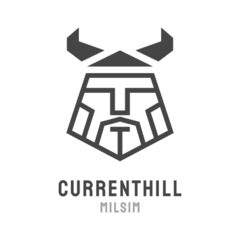
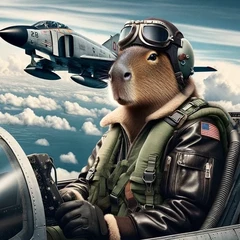
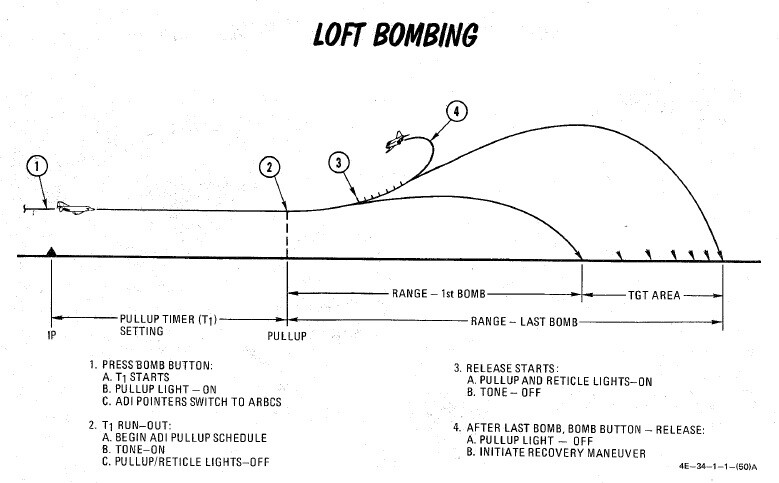




_insignia_2013.thumb.png.fa9b28cb9fbbf9ed8030eccdf2350695.png)
